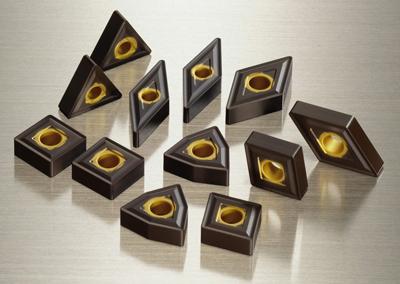
Sumitomo Electric Carbide Inc. has expanded is best-selling AC400K Series for cast iron turning to include new finishing and general-purpose grades.
The addition of the AC405K and the AC415K grades rounds out Sumitomo's turning options for every cast iron application. The AC405K grade offers excellent wear and deformation resistance for finishing grey cast iron at continuous, high speeds. The general-purpose AC415K grade provides stable turning in a wide range of grey and ductile cast iron applications. Sumitomo's original AC420K grade features excellent fracture resistance that produces extremely stable conditions when performing interrupted or unstable turning, according to the company.
The AC400K Series utilizes the EGZ chipbreaker for general purpose grooving. This carbide cutting series features Super FF Coating and a special surface treatment that strengthens the fine Alumina layer of the insert to provide excellent reliability. This newly developed coating provides 1.5 times longer tool life than conventional tools.
Contact Details
Related Glossary Terms
- chipbreaker
chipbreaker
Groove or other tool geometry that breaks chips into small fragments as they come off the workpiece. Designed to prevent chips from becoming so long that they are difficult to control, catch in turning parts and cause safety problems.
- grooving
grooving
Machining grooves and shallow channels. Example: grooving ball-bearing raceways. Typically performed by tools that are capable of light cuts at high feed rates. Imparts high-quality finish.
- turning
turning
Workpiece is held in a chuck, mounted on a face plate or secured between centers and rotated while a cutting tool, normally a single-point tool, is fed into it along its periphery or across its end or face. Takes the form of straight turning (cutting along the periphery of the workpiece); taper turning (creating a taper); step turning (turning different-size diameters on the same work); chamfering (beveling an edge or shoulder); facing (cutting on an end); turning threads (usually external but can be internal); roughing (high-volume metal removal); and finishing (final light cuts). Performed on lathes, turning centers, chucking machines, automatic screw machines and similar machines.
